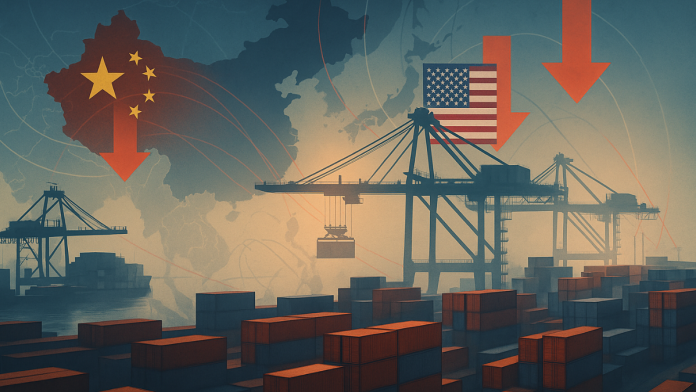Chinese manufacturers are pumping the brakes on their expansion into south-east Asia. A fresh round of US tariffs is shaking up long-laid supply chain strategies, forcing companies to rethink where they produce goods for American buyers.
For years, firms followed a “China plus one” model—setting up factories in countries like Vietnam, Cambodia, or Indonesia—to dodge high US tariffs on Chinese-made products. But now, many are realizing that the costs and complications of shifting production are rising just as the advantages begin to fade.
New US Tariffs Trigger Supply Chain Confusion
Recent decisions from Washington have caught businesses off guard. While the US has lowered some tariffs on Chinese goods to 30%, it has simultaneously slapped duties of up to 40% on exports from other Asian countries.
Even more disruptive is a new 40% tariff targeting “transshipped” goods—products made in China but shipped through a third country before reaching the US. This move has closed a loophole many exporters were using to save on costs, and it’s now prompting a major rethink.
⚔️ Moraes fights back — Supreme Court judge defies Trump’s tariffs, Bolsonaro’s pressure
Louise Loo, Asia economist at Oxford Economics, said this strategy is now under “tremendous stress.” Companies will either have to invest more heavily in new countries or return to producing in China, where mature infrastructure still offers big advantages.
High Costs and Hesitant Buyers Stall Expansion Plans
For many businesses, shifting production outside China is proving far more expensive than expected. Labour productivity, supply chain access, and logistics in south-east Asia haven’t matched China’s speed or scale.
Minyuan Footwear, a shoe manufacturer from Fujian, opened a large new facility in Cambodia. But after the latest tariff announcement, US buyers are now holding off on placing orders there.
Richard Laub, CEO of Dragon Sourcing, said the initial rush from American clients to find alternative suppliers has slowed down. “It went from getting maybe 10 calls a day to a trickle,” he noted, as buyers wait to see how the US-China trade talks develop.
The numbers also don’t always work in south-east Asia’s favour. If China faces a 30% tariff and other hubs like Mexico or Vietnam face tariffs only slightly lower, the savings often don’t outweigh the cost of relocating operations.
Bryant Chan of Hong Kong-based Wynnewood Corp said his company had started moving some production to Indonesia. But most components still came from China, making the benefits of shifting limited. He called the tariff rules a “double whammy,” saying they increase costs on both ends.
Some Firms Stay Put and Feel Vindicated
Some manufacturers never left China—and they’re now feeling validated. Zhao Fen, who owns four toy factories in Dongguan, said many peers opened plants in Vietnam only to face higher costs and weaker output. “They all regret it,” she said.
🔥 First oil pact, now tariff punch — why the U.S. is still taxing Pakistan’s goods
Zhao noted that even with tariffs, the actual increase in costs for her products was minimal. Demand from US buyers has stayed strong, she added, saying, “It is basically like there is no tax increase.”
Others echo that sentiment. For low-cost goods or high-tech products that require China’s advanced manufacturing, many exporters believe there’s simply no good replacement.
Quanzhou Viition Gifts, which runs operations in both Cambodia and China, is now turning its focus to Vietnam—though competition is stiff. Sales specialist Vera Li said Cambodia still has a slight edge, but the gap is narrowing fast.
Adam Fazackerley of US-based Lay N’ Go had moved orders to Cambodia earlier this year but now says the lack of flexibility and logistical ease is a concern. He’s watching tariff numbers closely. “If the numbers are close,” he said, “we’re manufacturing in China.”
For many Chinese exporters, the mix of rising costs, shifting tariffs, and buyer uncertainty is reshaping decisions once thought final. The pivot to south-east Asia is no longer a clear win—and for now, China remains firmly in the game.


